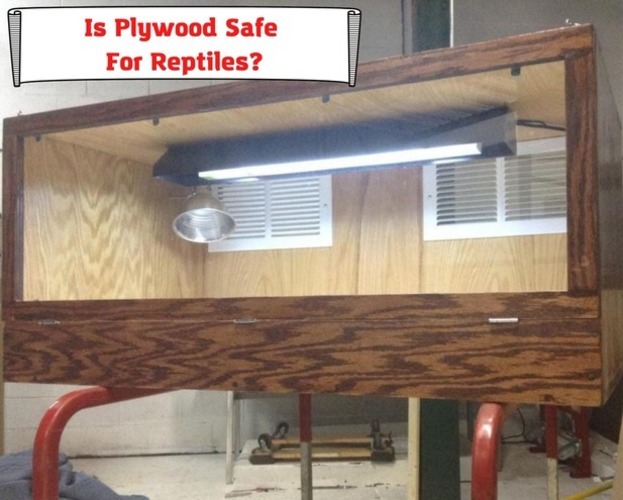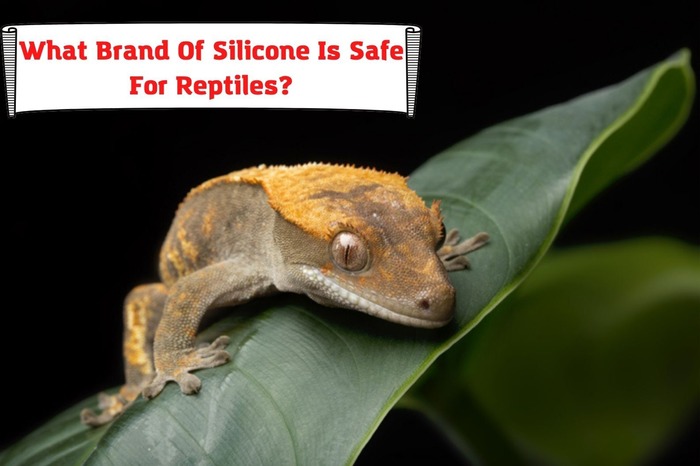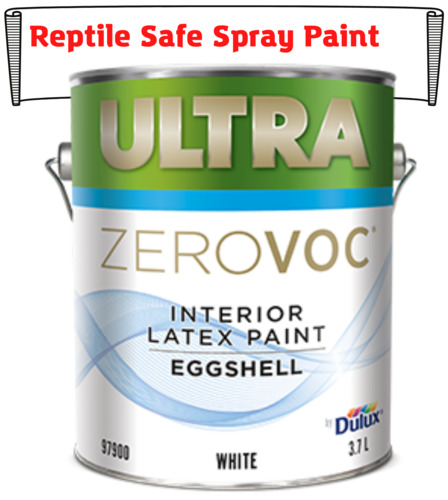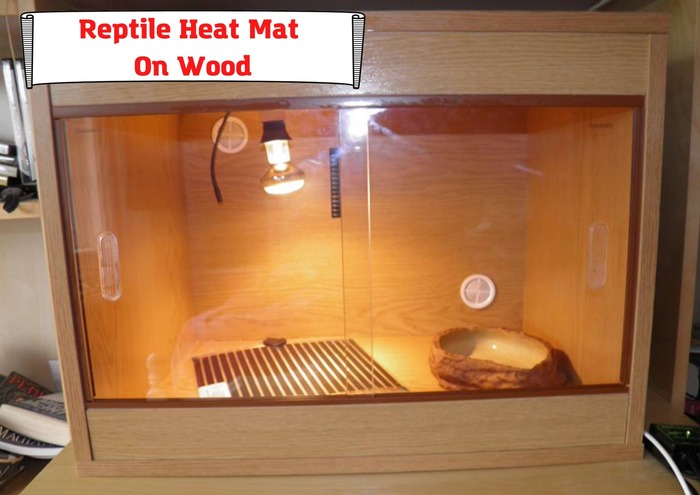
Many of the legitimate questions every caring pet keeper asks have always had some connection with safety. One of those valid questions asked before building an enclosure concerns plywood and its safety for reptile enclosures.
This article offers a detailed answer to that important question and other valid concerns of building a safe enclosure for your reptile.
This captivating piece discusses plywood, safety concerns regarding plywood for enclosure build, and some indispensable safety tips for building a safe reptile enclosure.
Plywood
Plywood is an alternative to wild-sought wood for your reptile enclosures. This is because many trees out in the wild are harmful to reptiles.
Plywood is a wood product typically made up of many thin layers of wood bonded together with the wood grains running against each other. The tiny layers are sandwiched concurrently with binders. They are then pressed and heated. This results in a dimensionally stable product which, unlike normal wood, does not contract and expand with moisture. This also makes it resistant to twisting, shrinking, or breaking. However, the piles are the usual minimum; the more piles, the better the plywood.
Safety of Plywood for Reptiles
Plywood is generally a safe building material for your reptile enclosures. But not all plywood is safe for your reptiles. The safety of the reptile enclosure depends on several factors. These include the type of plywood and other safety measures you undertake to eliminate the toxicity of the wood for your reptiles.
Many plywood products are usually made with phenol-formaldehyde and urea-formaldehyde. So the question of safety will depend on the safety of these chemical substances used in plywood production.
Phenol-formaldehyde resins are a great wood adhesive. It is one of many synthetically made resins which is produced by a reaction of phenol with a reactive gas that is derived from methane called formaldehyde. The point of phenol-formaldehyde is that it is a great wood adhesive used to increase the quality of plywood for use because it chemically bonds with the phenol-like lignin elements of wood. The plywood becomes moisture-resistant.
Phenol-formaldehyde in plywood made with it quickly reaches levels that are not detectable and pose no harm to your reptiles. Although it is toxic, the levels of exposure are so insignificant that they do not constitute a threat to the health of your reptiles if you build an enclosure with it.
Urea-formaldehyde, sometimes known as urea-methanal, is a thermosetting polymer that is non-transparent. It is also used mostly as an adhesive for bonding structural wood products such as plywood. The point here is that it is a highly reactive gas. Urea-formaldehyde-made plywood is not as safe as Phenol-formaldehyde-made plywood. They are only technically considered at 0.5 parts per million formaldehyde. They do not release gas as rapidly as phenol-formaldehyde.
What this suggests is that the toxicity of urea-formaldehyde-made plywood will depend greatly on how much urea-formaldehyde-made plywood is in the room, the rate of ventilation, and the tolerance level of the reptile. But it is not advisable to go for urea-formaldehyde-made plywood. That would be deliberately testing the limits of your reptiles.
Building A Safe Enclosure for Your Reptiles

Choose a Safe Plywood
Safety is more than a concern for toxic fumes. Structural strength also matters. When going for plywoods, make sure you choose hardwood plywood. But be careful! Pine and cedar plywood are not advisable for some reptiles, especially bearded dragons. They release fumes that are harmful to the reptiles. It would be best to use Oak or Maple plywood.
Also, when you choose hardwood plywood, the possibility of the enclosure falling in together to harm the reptile is avoided. More importantly, when you do some interior decorations in the enclosure, you can be sure that everything is firmly attached to the wood. This will reduce the chance of your reptiles accidentally swallowing a decoration piece that might fall off the enclosure wall if you use softwood plywood.
Seal It
Sealing the plywood may not be necessary if you are using plywood made with phenol-formaldehyde. The release of its toxic fumes is significantly lower, and the wood fully cures in a very short period. This makes the wood safe for building your reptile enclosure.
But sealing may be necessary for urea-formaldehyde. This is because this type of formaldehyde off-gasses for a longer period. Building a reptile enclosure with this type of plywood would be exposing your reptile to a potential health challenge.
Off-Gasing and Sealing in the Formaldehyde
It is important you allow the plywood to air out. Arrange them under a shady structure in a manner that permits airflow within each of them.
Since you are using plywood to build your reptile enclosure, it would be best to seal with a non-toxic sealant such as a clear acrylic-based coating. This will lock and seal in the formaldehyde.
Silicone sealants work well. But you must ensure that the sealant is 100% silicone. Silicone brands that are not 100% silicone may have some toxic fumes that may cause health challenges for your reptiles. Other sealants may also work well, but it is important that you observe the safety precautions. Also, it is important that you allow the enclosure to fully cure before putting your reptiles in it. Some sealants cure within forty-eight hours after the application. Others may take up to seven days to cure completely. You may leave it for some extra hours or days just to be extra confident that all the toxic fumes are gone.
Taking Other Safety Factors into Account
Other considerations include the following.
Heat Flow Regulation
Reptiles are ectothermic in nature. This means they are coldblooded and need a heat source to help them regulate the internal heat levels they need for metabolic activities.
It is usual practice to use artificial heat sources such as heat mats and heat lamps to supply the heat they need. But if care is not taken, choosing the wrong heat source for your reptile while building the enclosure can cause safety risks for your reptiles. Instances here include the following:
- Fixing a heat lamp in a small size reptile enclosure.
- For a small enclosure, a stand with a clamp would be appropriate to regulate the heat lamp’s heat. If fixed in the enclosure, the reptile could suffer stress from the excess heat. This could also lead to severe health problems. Hence, it would be unsafe to have a heat source directly in such a small enclosure.
It would be best to also construct a space for a thermometer in the enclosure to monitor the temperature.
- Exposing wires of the heating system in the enclosure
- This could happen during the construction process. If naked wires are accidentally left open or poorly connected in the enclosure, you would be deliberately putting your reptiles at the risk of electrocution. Explore options that prevent the interior wiring of the enclosures. Ensure to use insulations during the construction if wires must be in the enclosure.
Poor Choice of Decoration
Decorative items that could injure the reptile should never be used to decorate a reptile enclosure. Instances include:
- Attaching artificial greenery with sharp objects such as pins that have exposed sharp points. It would be best to attach greenery with adhesives. But ensure that the adhesive cures completely so that your reptiles do not suffer any respiratory challenge or skin irritation from exposure to any toxic fumes from the adhesive.
- Poorly constructed hides that could fall apart and injure the reptile.
- Poor choice of hide material threatens the safety of the reptile. For example, It would be unsafe to use styrofoam as a hide choice without taking steps to ensure that the reptile does not scratch and swallow tiny chunks of it. That could cause a gastrointestinal problem even block the airway of the reptile.
- Another example is failing to secure rocks used to construct hides properly. The rocks could fall apart and land on your reptile with a sharp point or on a delicate part of its body. This would cause injury to your reptile. So during the construction period, it would be best to secure rocks well.
Ventilation
Ventilation is of importance and should direct the construction of a safe enclosure. However, it is highly unlikely that a hobbyist builds an enclosure that does not allow for any ventilation at all; enclosures that allow ventilation but inadequately are unsafe for your reptiles.
The nature and size of the reptile will determine the size of the airways to be built in the enclosure. But a cardinal principle of construction for ventilation is to provide a two-way ventilation system. This will ensure proper movement of oxygen in the enclosure for your reptile.
Fire
Building your reptile enclosure with fire-resistant materials is a sure way to ensure the safety of your reptiles. After constructing the enclosure, coating it all around with a fire-resistant sealant would help to minimize the risk of the enclosure easily burning up during a fire breakout. This will buy you enough time to save your reptile. Also, it would work great to reduce the possibility of a fire outbreak from any accidental mishandling of your heating system.
Conclusion
The need for housing your reptile is as equally important as the safety of the housing structure. Safety must be construed in a broader sense because the health and wellbeing of your pet are very important. These important, eye-opening details are sure to help you make sound decisions for the construction.
- Dubia Roach Egg Sack: How To Understand if It’s Healthy? - January 2, 2023
- How To Feed African Dwarf Frog While on Vacation? - December 26, 2022
- Baytril for Bearded Dragon: Here’s What You Should Know - December 19, 2022



